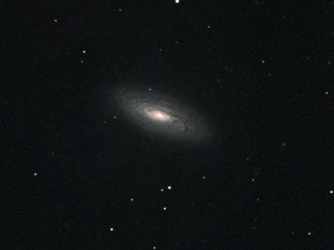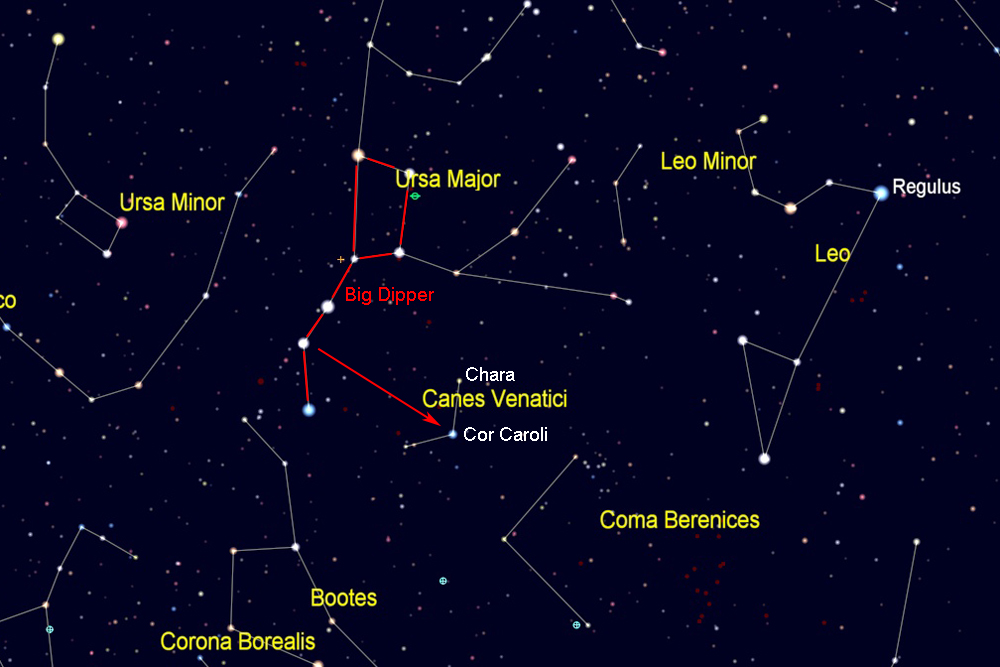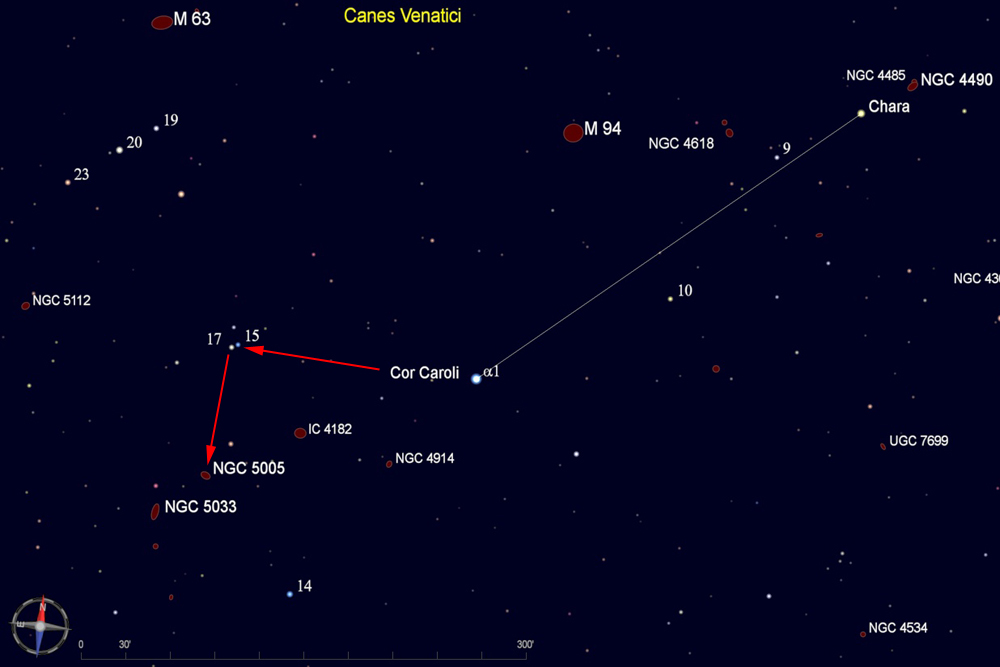| NGC 5005 is a spiral galaxy with an oblong shape as seen from our perspective. At magnitude 9.7, it is bright enough to be seen in a small telescope. Through the eyepiece it has a bright central region surrounded by the fainter glow of its spiral arms. Just over 1/2 degree away is NGC 5033, a spiral galaxy of similar size and brightness. For large scopes, a few fainter galaxies are nearby, including IC 4182 and NGC 4914. |
 |
| Evening visibility: |
March-August |
| Best viewed with: |
telescope |
| |
Printable chart (pdf) |
View larger image |
Directions:
Start by finding the Big Dipper, one of the most recognizable star patterns in the sky. It is part of the constellation Ursa Major, the big bear. It is shown here on its side as it appears on early spring evenings. For other seasons and times of night rotate the chart as needed to match what you see in the northern sky. Then look "underneath" the curved handle of the Big Dipper for Cor Caroli, the brightest star in the small constellation Canes Venatici at magnitude 2.8. |
. |
| From Cor Caroli, look 2.7 degrees to the west to find a close pair of stars, 15 and 17 Canes Venatici, which will be visible in a finderscope or binoculars. Once these are centered in your telescope eyepiece, move 1.5 degrees south to reach NGC 5005. NGC 5033 is 1/2 degree to the southwest and can be seen in the same low-power field of view. Looking about 1 degree from NGC 5005 in the opposite direction brings you to the much dimmer IC 4182, and another degree to the southwest is NGC 4914. |
 |
| Star charts created with Cartes du Ciel |
| |
| |


